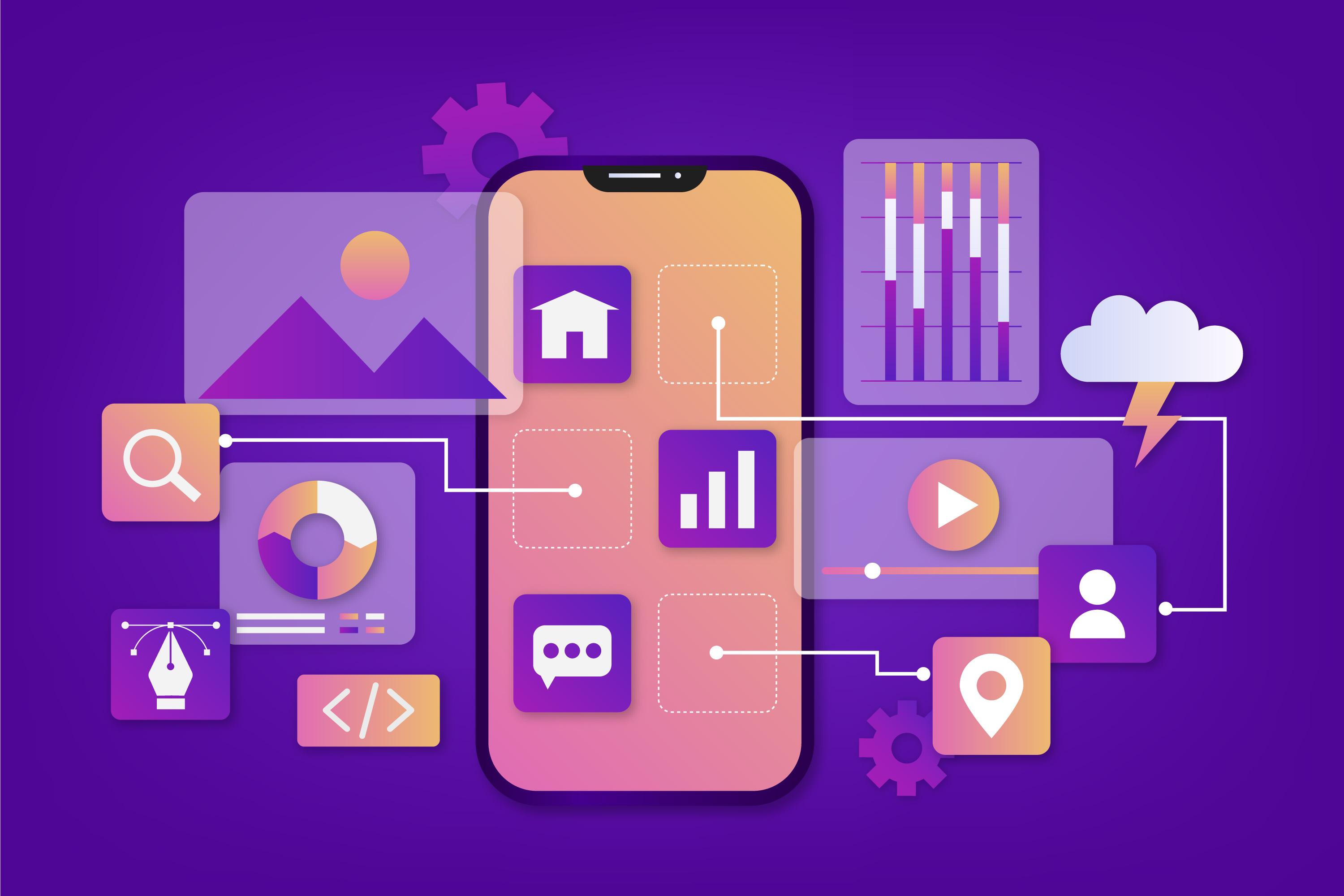In today’s rapidly evolving digital landscape, businesses rely heavily on applications to operate efficiently and compete effectively. However, many organizations struggle with legacy applications – outdated software systems built with older technologies. These applications can become bottlenecks, hindering performance, security, and business agility.
This blog will explore the concept of application modernization, its benefits, and the signs that indicate your business needs to modernize its applications. We will also delve into the specific industries that stand to gain significant advantages from application modernization, and the compelling reasons to invest in these application modernization services.
Understanding Application Modernization Services
Application modernization refers to the process of updating legacy applications to leverage modern technologies and architectures. This can involve various methods, ranging from rehosting applications on cloud platforms (rehosting) to completely rebuilding them from scratch (rebuilding) with modern technologies and development methodologies. The scope of modernization can be tailored to the specific needs of each application and the desired outcomes.
Signs That Your Business Needs Application Integration Services
There are several telltale signs that indicate your business needs to modernize its legacy applications:
1. Performance Issues:
- Slow response times: Legacy applications may struggle to keep up with increasing user demands, leading to sluggish performance and frustrating user experiences.
- Frequent downtimes: Outdated systems are more prone to crashes and outages, disrupting business operations and costing valuable productivity.
2. High Maintenance Costs:
- Legacy systems often require specialized skills and expertise to maintain, which can be expensive.
- The cost of maintaining outdated hardware and software licenses can quickly become a significant financial burden.
- Application modernization companies can help reduce these costs by modernizing applications that are easier to support and require less maintenance.
3. Scalability Challenges:
- Legacy applications may lack the flexibility to scale and adapt to growing business needs.
- Adding new features or users can be difficult or even impossible with these systems.
- Modern applications are designed with scalability in mind, allowing them to adapt to changing demands effortlessly.
4. Security Vulnerabilities:
Legacy applications often have outdated security measures, leaving them vulnerable to cyber threats and data breaches.
Modernized applications utilize the latest security protocols and encryption methods, ensuring better protection of sensitive data.
5. Integration Difficulties:
Integrating legacy applications with newer technologies and systems can be a complex and challenging task.
Modern applications typically leverage open standards and APIs (Application Programming Interfaces) that facilitate easier integration with other systems and tools.
6. Lack of Flexibility and Agility:
Legacy applications can be rigid and inflexible, making it difficult to adapt to changing market conditions or evolving customer needs.
Modern applications are designed to be modular and agile, allowing for faster development and deployment of new features and functionalities.
7. Inability to Meet Compliance Requirements:
Regulations and compliance standards are constantly evolving, and outdated applications may struggle to meet them.
Modernized applications can be designed with compliance in mind, minimizing risks associated with non-compliance.
Industries That Benefit from Application Modernization
Application modernization can significantly benefit businesses across various industries. Here are a few examples:
1. Logistics
Modernizing applications can optimize supply chain management and transportation logistics. Real-time tracking and inventory management systems can be seamlessly integrated with existing infrastructure using an application modernization service.
2. Healthcare
Modernized healthcare applications can improve patient data management and security. Integration with new technologies like telehealth and wearable devices can further enhance patient care and remote monitoring capabilities.
3. Manufacturing
Modernizing applications can streamline operational efficiency and optimize supply chain management. Integration with IoT (Internet of Things) technologies can empower businesses to leverage Industry 4.0 advancements through application modernization solutions.
4. Automotive
Modernization allows for the integration of advanced driver-assistance systems (ADAS) and other critical features. Improved production processes and efficient supply chain management can contribute to increased competitiveness.
Why Choose Application Modernization Services?
There are numerous compelling reasons for businesses to consider application modernization services:
1. Enhanced Performance and User Experience:
Modernized applications offer faster response times and improved reliability, leading to a more positive user experience for both customers and employees. This translates to increased customer satisfaction, improved operational efficiency, and better overall business performance.
2. Cost Savings:
Modernization can significantly reduce maintenance and operational costs associated with legacy systems. Businesses can free up IT resources and allocate budgets towards innovation and strategic initiatives.
3. Improved Security and Compliance:
Modernization enhances security by incorporating the latest security protocols, encryption methods, and access controls. This ensures better protection against cyber threats and data breaches, and mitigates risks associated with non-compliance with regulations.
4. Increased Agility and Flexibility:
This allows businesses to adapt quickly to changing market conditions, respond to customer feedback in a timely manner, and capitalize on new opportunities more effectively. Modern applications are designed to be modular and cloud-native, enabling faster iterations and easier scaling to meet evolving business needs.
5. Better Integration and Interoperability:
Modernized applications leverage open standards and APIs, facilitating seamless integration with other modern technologies and platforms. This improves data flow and collaboration across systems, streamlining processes and enhancing overall operational efficiency.
Steps to Begin Application Modernization
Modernizing applications is a strategic decision that requires careful planning and execution. Here’s a breakdown of the key steps involved:
1. Assessment and Planning:
- Conduct a thorough assessment of your current application landscape, including performance metrics, security vulnerabilities, and integration challenges.
- Define your specific goals for modernization, considering factors such as improved user experience, cost reduction, and increased agility.
- Develop a clear roadmap outlining the modernization approach, timeline, and resources required.
2. Choosing the Right Modernization Strategy:
There are various application modernization strategies, each with its own advantages and limitations. Here are some of the most common approaches:
- Rehosting: Migrating legacy applications to a cloud platform without modifying the application code itself.
- Refactoring: Modernizing the application codebase without changing the core functionality.
- Rearchitecting: Rebuilding the application with a modern architecture and technology stack.
- Rebuilding: Completely developing the application from scratch using modern tools and frameworks.
- Replacing: Replacing the legacy application with a commercially available software solution (COTS) that meets your business needs.
The optimal strategy depends on factors such as the application’s complexity, budget constraints, and desired outcomes.
3. Implementation and Migration:
This phase involves the actual execution of the chosen modernization strategy. This may involve code migration, infrastructure changes, data migration, and integration with other systems. Ensure there are robust plans in place to minimize disruption during the migration process.
4. Continuous Improvement and Monitoring:
Application modernization is not a one-time event. Modernized applications require ongoing optimization, maintenance, and security updates. Utilize data analytics and monitoring tools to identify areas for improvement and ensure the continued effectiveness of your modernized applications.
Conclusion
Legacy applications can become a significant burden for businesses in today’s fast-paced digital world. By investing in application modernization services, businesses can unlock a wealth of benefits, including improved performance, enhanced security, increased agility, and cost savings. A modernized application landscape empowers businesses to adapt to change, compete effectively, and deliver exceptional value to their customers.
Taking the first step towards modernization can be daunting, but a thorough assessment and a well-defined strategy will guide you through the process. With the right approach and guidance from experienced application modernization service providers, businesses can reap the numerous benefits of modern applications and ensure their long-term success in the digital age.

